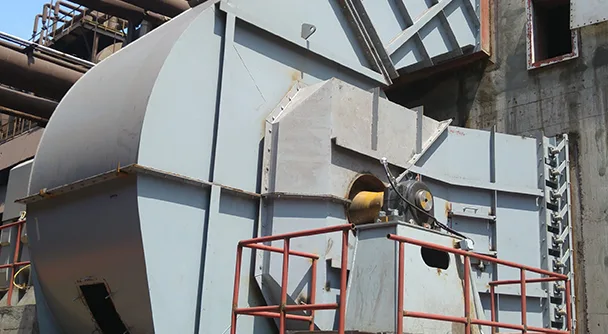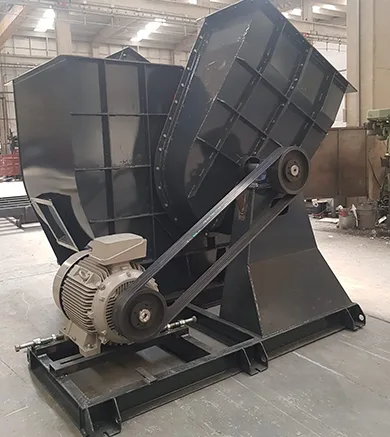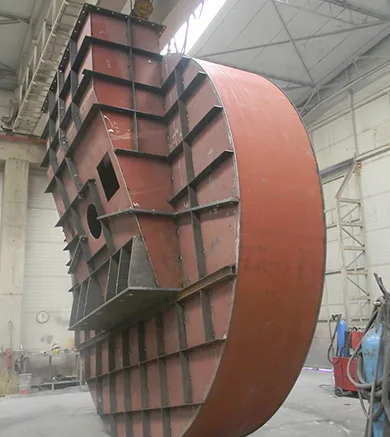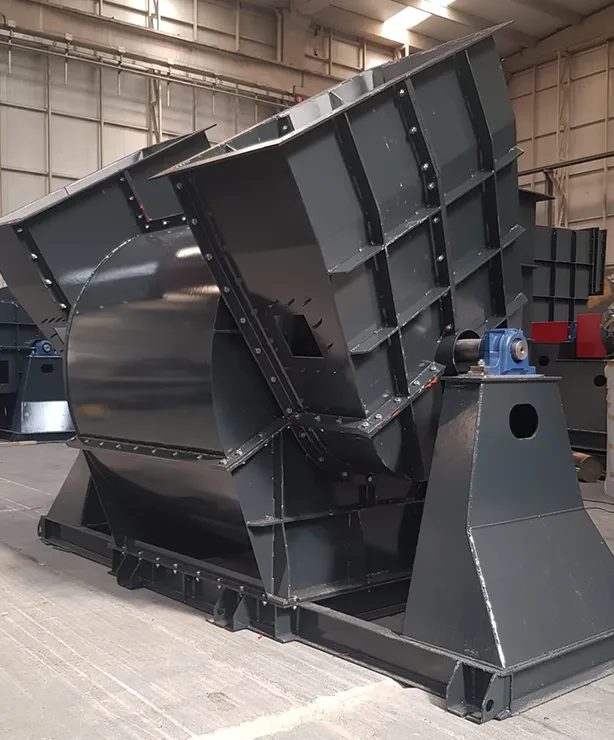A radial fan is a type of fan that draws in air from the surroundings through a propeller and expels it outward. These fans operate by suction, simultaneously designed to facilitate the outward flow of air from the center. The fan blades, as they rotate, direct the air radially from the center to the edges.
A radial fan is commonly used to provide air circulation in industrial spaces. They can also be preferred in certain cooling systems. These fans can be designed in various ways depending on the level of airflow and pressure required. The features of these fans can vary based on their intended use and design.
The main characteristics of radial fans include:

What Is a Radial Fan?
Radial fans are used to provide air circulation in offices, buildings, and industrial facilities, as well as to remove dust and unpleasant odors. These fans also have a function in balancing the temperature in the environment through cooling and heating systems. They can be crucial in the chemical industry and laboratories for removing toxic gases. Additionally, they can facilitate the evaporation of moisture and liquids as a drying mechanism after processes like painting and washing.
These fans have a wide range of applications. Industrial radial fans are commonly used in warehouses, factories, mines, agricultural facilities, and power plants. They are highly effective for ventilation, cooling, and smoke extraction, making them one of the preferred fan types in ventilation systems.
How Does a Radial Fan Work?
The working principle of radial fans, which involves moving air or gas to create an airflow, is as follows:


The working system of these fans makes them versatile in various applications. They are used not only for providing airflow in industrial facilities but also for ensuring air circulation in heating and cooling systems. They can also be preferred for filtering dust, smoke, and other particles generated during production processes in factories.
Another application for dual-inlet radial fans is in cooling towers and industrial furnaces. Fans that facilitate the removal of harmful gases and vapors from laboratories contribute to creating a safer working environment. Some fans can even transport lightweight materials through airflow.
It’s worth noting that these fans find applications not only in industry but also in agriculture and livestock farming. Greenhouses and farms require fans to ensure proper air circulation and control temperature and humidity.
The use of these fans has several benefits for businesses and employees, including:
- Providing clean air in working environments.
- Ensuring the health and safety of employees.
- Increasing production efficiency and enabling energy savings.
- Being durable for long-term use even in harsh conditions.
- Reducing operating costs in the long run.
- Minimizing noise levels with modern fan designs.
- Being resilient to challenging environmental conditions.

Radial Fan Prices
The prices of fans can vary depending on their intended use, capacity, and technical specifications. Therefore, before researching fan prices, it’s essential to determine the needs of the facility and evaluate fan models that match those requirements. Information about models, technical specifications, and prices can be obtained by contacting companies that manufacture fans.
The price of a fan is influenced by factors such as the size of the area where it will be used and the volume of air it needs to move. Investing in ventilation motors can significantly reduce costs in the long run. Fans play a crucial role in controlling temperature, humidity, dust, and odors in the environment, reducing the impact of adverse conditions.
Industrial fans and ventilation systems come in a wide price range. Typically, factors such as motor capacity, the intended area of use, energy efficiency, and brand determine the price difference. When selecting fans for their businesses, companies should consider their needs and budgets while also ensuring the quality of the product.
